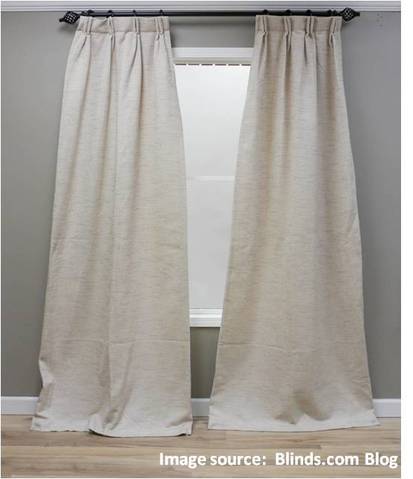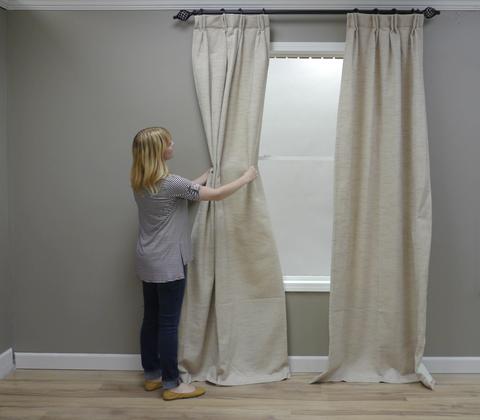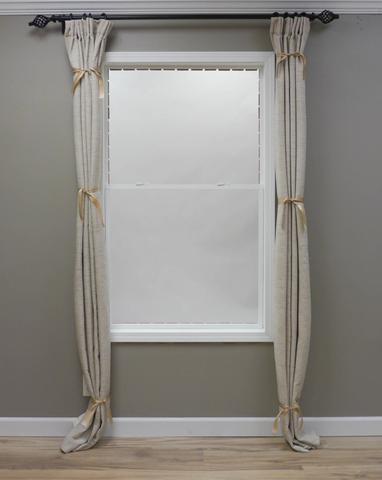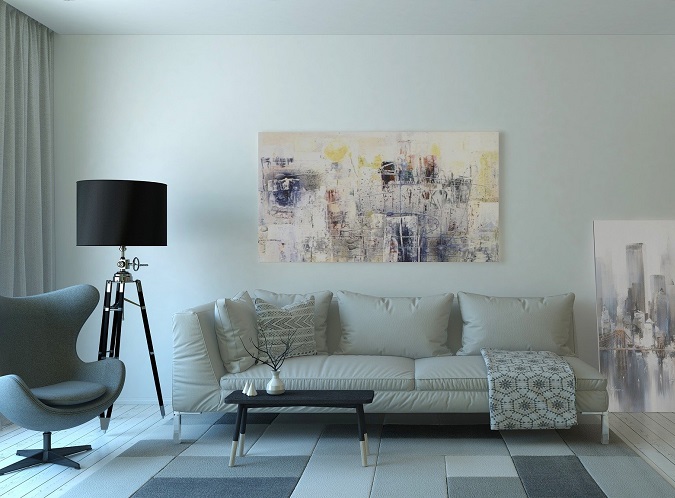Spiffy Speak
My new custom curtains are flaring at the bottom instead of hanging in neat folds. What should I do?
Many buyers expect their new drapes to hang and fall in perfect straight folds the moment they go up (and why shouldn’t they, they are new afterall, right?!). But fact is, new curtains rarely ever fall in straight folds right out of the package. They need to be ‘trained’.

Below are a few simple steps to ensure your curtains look fabulous soon after the unboxing.
- Most fabrics develop minor wrinkles and creases in transit or during the unboxing. So it helps to iron out the wrinkles before you hang them up.
- Then start by folding your drapes with hands along the pleats at the top. It’s easier to fold the drapes with pinch pleat styles. Headings such as grommet tops and pencil pleats tend to take a bit more work and time in forming equidistant pleats/folds, so be prepared for that if you’ve ordered one of the non-pinch pleat styles.

- Once you’ve folded the panels, tie them at 3-4 points with a ribbon or yarn, along the length of the curtains. Don’t tie them too tight though as that might leave sharp creases. Keep them loose in a snug, vertical stack.

- We recommend leaving your drapes tied for at least 2 weeks. After that period, untie them and poof – the flaring bottom is gone!
- If two weeks seems like a very long time, we recommend using a steam iron while they are tied to expedite the pleat-setting process. With this, you may be able to get the same effect within 3-4 days.
- Certain fabrics – polyester for example – can take a long time and are more resistant to training. In these cases, adding weights to the bottom will lend some extra ‘shaping help’.
While this process will get you an even gather within a couple of weeks for most fabrics, don’t worry if you don’t have time to follow the process to train your drapes. Most drapery falls into shape sooner or later on its own due to weight of fabric itself and because the drapes are naturally trained when drawn to the sides during daytime for example. Of course, this also means it might be a month or two before you see perfect vertical folds from top to bottom, but trust us, it happens sooner or later.
Also, bear in mind that how the drapery falls depends a lot on the nature and weight of fabric. Whether it is lined or unlined, style of pleating, single ply or two ply – everything contributes to the rate at which the pleats settle in even, vertical folds. So give them training and give them time.
Got another tip to get the best look for new curtains? Drop us a line, we’d love to hear from you!
Image credit: Blog by Blinds.com
ALSO READ: FRENCH PLEAT DRAPES: BESPOKE ART FOR WINDOWS



